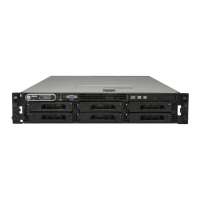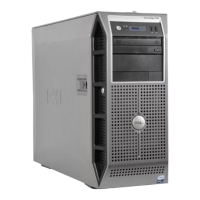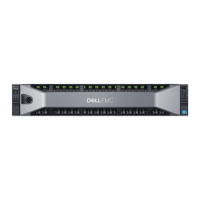14 Dell PowerEdge 6100/200 System User’s Guide
virtual 8086 mode
An operating mode supported by Intel386 or higher
microprocessors, virtual 8086 mode allows operating en-
vironments—such as Windows—to run multiple programs
in separate 1-MB sections of memory. Each 1-MB section
is called a virtual machine.
virtual memory
A method for increasing addressable RAM by using the
hard-disk drive. (MS-DOS does not support true virtual
memory, which must be implemented at the operating sys-
tem level.) For example, in a computer with 8 MB of RAM
and 16 MB of virtual memory set up on the hard-disk drive,
the operating system would manage the system as though
it had 24 MB of physical RAM.
virus
A self-starting program designed to inconvenience you.
Virus programs have been known to corrupt the files stored
on a hard-disk drive or to replicate themselves until a sys-
tem or network runs out of memory.
The most common way that virus programs move from
one system to another is via “infected” diskettes, from
which they copy themselves to the hard-disk drive. To
guard against virus programs, you should do the following:
•
Periodically run a virus-checking utility on your
computer’s hard-disk drive
•
Always run a virus-checking utility on any diskettes
(including commercially sold software) before using
them
VL-Bus
™
An abbreviation for VESA local bus. A standard for local
bus implementation developed by the Video Electronics
Standards Association.
VLSI
Abbreviation for very-large-scale integration.
Vpp
Abbreviation for peak-point voltage.
VRAM
Abbreviation for video random-access memory. Some
video adapters use VRAM chips (or a combination of
VRAM and DRAM) to improve video performance.
VRAM is dual-ported, allowing the video adapter to
update the screen and receive new image data at the same
time.
W
Abbreviation for watt(s).
win.ini
file
When you start Windows, it consults the win.ini file to
determine a variety of options for the Windows operating
environment. Among other things, the win.ini file records
what printer(s) and fonts are installed for Windows. The
win.ini file also usually includes sections that contain op-
tional settings for Windows application programs that are
installed on the hard-disk drive.
Running the Control Panel or Windows Setup program
may change options in the win.ini file. On other occasions,
you may need to change or add options to the win.ini file
manually with a text editor, such as Notepad.
write-protected
Read-only files are said to be write-protected. You can
write-protect a 3.5-inch diskette by sliding its write-protect
tab to the open position and a 5.25-inch diskette by placing
an adhesive label over its write-protect notch.
XMM
Abbreviation for extended memory manager, a utility that
allows application programs and operating environments
to use extended memory in accordance with the XMS. See
also conventional memory, EMM, expanded memory,
extended memory, and memory manager.
XMS
Abbreviation for eXtended Memory Specification. See
also EMS, extended memory, and memory manager.
ZIF
Acronym for zero insertion force. Some computers use ZIF
sockets and connectors to allow devices such as the micro-
processor chip to be installed or removed with no stress
applied to the device.

